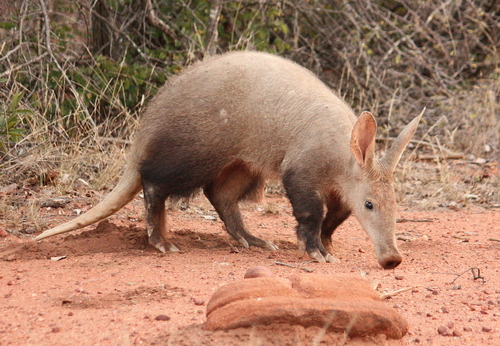
Aardvark
Orycteropus afer, the aardvark, is a solitary, nocturnal digger of Africa's savannas. With its elongated snout and specialized claws, it devours termites and ants, maintaining ecological balance. Its unique foraging habits and distinctive appearance make it a fascinating subject of the African wildlife landscape.
23 years
Lifespan
60.0 - 80.0 kg
Weight
Length: 1.05 - 2.2 m
Size
Brown, Grey, Yellow
Color
2 years
Age of Sexual Maturity
3 months
Age of Weaning
25 mph
Top Speed
Least Concern
Conservation Status
Unknown
Population Trend
Characteristics
The aardvark, Orycteropus afer, is a nocturnal mammal native to sub-Saharan Africa. It has a pig-like snout, large ears, and a robust body covered with coarse hair. Known for its powerful claws, the aardvark digs for ants and termites, playing a crucial role in controlling insect populations.
Distribution Range of the Aardvark
Orycteropus afer, commonly known as the aardvark, is native to sub-Saharan Africa. Its geographical distribution spans across various countries, including South Africa, Namibia, Botswana, Zimbabwe, Kenya, and Ethiopia, with its range extending from southern to eastern and central Africa.
Aardvark's Habitat
Environmental Conditions
Aardvarks inhabit a variety of environments, primarily favoring savanna and grassland regions. They are also found in woodlands and open areas with sandy soils, which facilitate their burrowing behavior. These regions are characterized by warm climates with both wet and dry seasons.
Ecological Niche
Aardvarks are nocturnal, burrowing mammals that play a crucial ecological role as insectivores, primarily feeding on ants and termites. They contribute to soil aeration through their digging activities and provide shelter for other animals through their abandoned burrows. Aardvarks are adapted to a solitary lifestyle, with a keen sense of smell and strong limbs for digging.
Copyright @ Nature Style Limited. All Rights Reserved.
 English
English